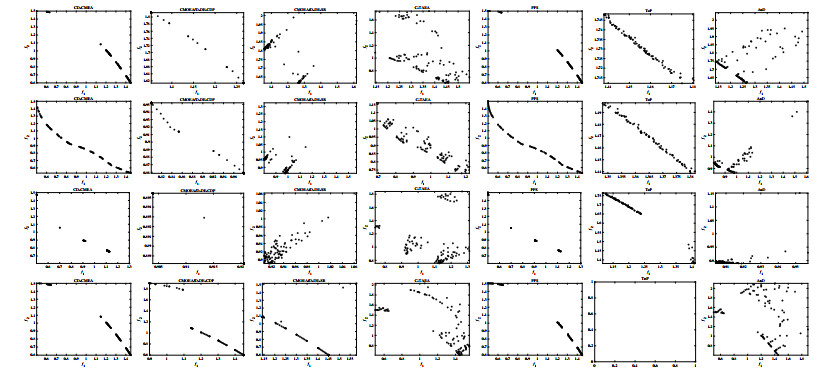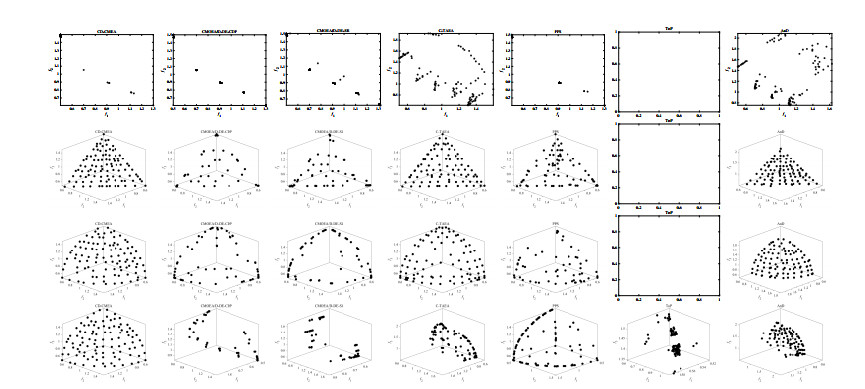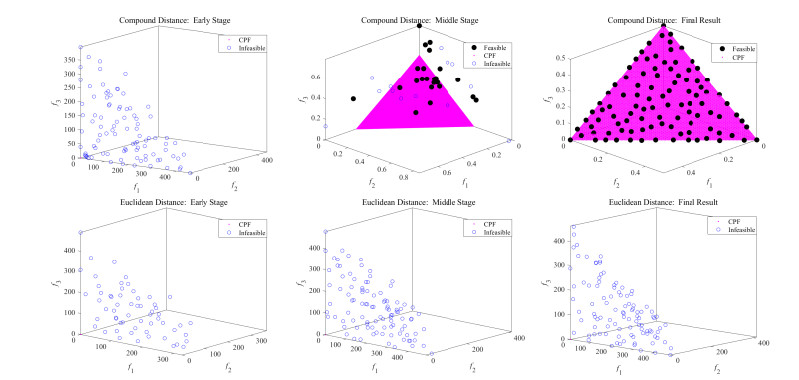1.
Introduction
The topic of fractional differential equations received immense popularity and attraction due to their extensive use in the mathematical modeling of several real world phenomena. Examples include HIV-immune system with memory [1], stabilization of chaotic systems [2], chaotic synchronization [3,4], ecology [5], infectious diseases [6], economic model [7], fractional neural networks [8,9], COVID-19 infection [10], etc. A salient feature distinguishing fractional-order differential and integral operators from the classical ones is their nonlocal nature, which can provide the details about the past history of the phenomena and processes under investigation. In the recent years, many researchers contributed to the development of fractional calculus, for example, see [11,12,13,14,15,16,17,18,19,20,21,22,23,24] and the references cited therein. One can also find a substantial material about fractional order coupled systems in the articles [25,26,27,28,29,30,31,32,33,34].
In this paper, motivated by [30], we consider a Caputo type coupled system of nonlinear fractional differential equations supplemented with a new set of boundary conditions in terms of the sum and difference of the governing functions given by
where CDχ is the Caputo fractional derivative operator of order χ∈{ν,ρ}, ν,ρ∈(0,1], 0<σi<η<ζ<T, i=1,…,m (the case 0<η<ζ<σi<T can be treated in a similar way), P1,P2,ai,A are nonnegative constants, such that P1+P2−m∑i=1ai≠0, T−ζ+η≠0, and f,g:[0,T]×R2→R are continuous functions.
Here it is imperative to notice that the first condition introduced in the problem (1.1) can be interpreted as the sum of the governing functions φ and ψ at the end positions of the interval [0,T] is sum of similar contributions due to arbitrary positions at σi∈(0,T),i=1,...,m, while the second condition describes that the contribution of the difference of the governing functions φ and ψ on the domain [0,T] differs from the one an arbitrary sub-domain (η,ξ) by a constant A.
We will also study the problem (1.1) by replacing A in the last condition with the one containing nonlinear Riemann-Liouville integral term of the form:
where h:[0,T]×R2→R is a given continuous function.
We organize the rest of the paper as follows. In Section 2, we outline the related concepts of fractional calculus and establish an auxiliary lemma for the linear analogue of the problem (1.1). We apply the standard fixed point theorems to derive the existence and uniqueness results for the problem (1.1) in Section 3. The case of nonlinear Riemann-Liouville integral boundary conditions is discussed in Section 4. The paper concludes with some interesting observations and special cases.
2.
Preliminaries
Let us begin this section with some preliminary concepts of fractional calculus [11].
Definition 2.1. The Riemann-Liouville fractional integral of order q>0 of a function h:[0,∞)→R is defined by
provided the right-hand side is point-wise defined on (0,∞), where Γ is the Gamma function.
Definition 2.2. The Caputo fractional derivative of order q for a function h:[0,∞]→R with h(t)∈ACn[0,∞) is defined by
Lemma 2.1. Let q>0 and h(t)∈ACn[0,∞) or Cn[0,∞). Then
Now we present an auxiliary lemma related to the linear variant of problem (1.1).
Lemma 2.2. Let F,G∈C[0,T], φ,ψ∈AC[0,T].Then the solution of the following linear coupled system:
is given by
where
Proof. Applying the operators Iν and Iρ on the first and second fractional differential equations in (2.2) respectively and using Lemma 2.1, we obtain
where c1,c2∈R. Inserting (2.7) and (2.8) in the condition P1(φ+ψ)(0)+P2(φ+ψ)(T)=m∑i=1ai(φ+ψ)(σi), we get
Using (2.7) and (2.8) in the condition ∫T0(φ−ψ)(s)ds−∫ζη(φ−ψ)(s)ds=A, we obtain
Solving (2.9) and (2.10) for c1 and c2, yields
and
Substituting the values of c1 and c2 in (2.7) and (2.8) respectively, we get the solution (2.3) and (2.4). By direct computation, one can obtain the converse of this lemma. The proof is complete.
3.
Main results
Let X=C([0,T],R)×C([0,T],R) denote the Banach space endowed with the norm ‖(φ,ψ)‖=‖φ‖+‖ψ‖=supt∈[0,T]|φ(t)|+supt∈[0,T]|ψ(t)|, (φ,ψ)∈X. In view of Lemma 2.2, we define an operator Φ:X→X in relation to the problem (1.1) as
where
and
In the forthcoming analysis, we need the following assumptions.
(H1) There exist continuous nonnegative functions μi,κi∈C([0,1],R+),i=1,2,3, such that
(H2) There exist positive constants αi,βi,i=1,2, such that
For computational convenience, we introduce the notation:
and
We make use of the following fixed point theorem [35] to prove the existence of solutions for the problem (1.1).
Lemma 3.1. Let E be the Banach space and Q:E→E be a completely continuous operator. If the set Ω={x∈E|x=μQx,0<μ<1} is bounded, then Q has a fixed point in E.
Theorem 3.1. Suppose that f,g:J×R2→R are continuousfunctions and the condition (H1) holds. Then there exists at least one solution for the problem (1.1) on J if
where ϱi(i=1,2) are defined in (3.4)–(3.5).
Proof. Observe that continuity of Φ:X→X follows from that of the functions f and g. Now we show that the operator Φ maps any bounded subset of X into a relatively compact subset of X. For that, let Ωˉr⊂X be bounded. Then, for the positive real constants Lf and Lg, we have
So, for any (φ,ψ)∈Ωˉr, t∈J, we get
which, in view of (3.4) and (3.5), takes the form:
In a similar fashion, one can obtain
From (3.7) and (3.8), we get
From the foregoing inequality, we deduce that the operator Φ is uniformly bounded.
In order to show that Φ maps bounded sets into equicontinuous sets of X, let t1,t2∈[0,T],t1<t2, and (φ,ψ)∈Ωˉr. Then
Analogously, we can obtain
Clearly the right-hand sides of the above inequalities tend to zero when t1→t2, independently of (φ,ψ)∈Ωˉr. Thus it follows by the Arzelá-Ascoli theorem that the operator Φ:X→X is completely continuous.
Next we consider the set E={(φ,ψ)∈X|(φ,ψ)=λΦ(φ,ψ),0<λ<1} and show that it is bounded. Let (φ,ψ)∈E, then (φ,ψ)=λΦ(φ,ψ),0<λ<1. For any t∈J, we have
As in the previous step, using ϱi(i=1,2) given by (3.4)-(3.5), we find that
In consequence, we get
Thus, by the condition (3.6), we have
which shows that ‖(φ,ψ)‖ is bounded for t∈J. In consequence, the set E is bounded. Thus it follows by the conclusion of Lemma 3.1 that the operator Φ has at least one fixed point, which is indeed a solution of the problem (1.1).
Letting μ2(t)=μ3(t)≡0 and κ2(t)=κ3(t)≡0, the statement of Theorem 3.1 takes the following form.
Corollary 3.1. Let f,g:J×R2→R be continuousfunctions such that
where μ1,κ1∈C([0,T],R+). Then there exists at least one solution for the problem (1.1) on J.
Corollary 3.2. If μi(t)=λi,κi(t)=εi,i=1,2,3, then the condition (H1) becomes:
(H′1) there exist real constants λi,εi>0,i=1,2, such that
and (3.6) takes the form:
Then there exists at least one solution for the problem (1.1) on J.
The next result is concerned with the existence of a unique solution for the problem (1.1) and is reliant on the contraction mapping principle due to Banach.
Theorem 3.2. Let f,g:[0,1]×R2→R be continuous functions and the assumption (H2) holds.Then the problem (1.1) has a unique solution on J if
where α=max{α1,α2},β=max{β1,β2} and ϱi,i=1,2, are defined in (3.4)-(3.5).
Proof. Consider the operator Φ:X→X defined by (3.1) and take
where M1=supt∈[0,T]|f(t,0,0)|, and M2=supt∈[0,T]|g(t,0,0)|. Then we show that ΦBr⊂Br, where Br={(φ,ψ)∈X:‖(φ,ψ)‖≤r}. By the assumption (H1), for (φ,ψ)∈Br,t∈[0,T], we have
In a similar manner, one can find that
In consequence, for (φ,ψ)∈Br, we obtain
which, on taking the norm for t∈J, yields
In the same way, for (φ,ψ)∈Br, one can obtain
Therefore, for any (φ,ψ)∈Br, we have
which shows that Φ maps Br into itself.
Next it will be shown that the operator Φ is a contraction. For (φ1,ψ1),(φ2,ψ2)∈E,t∈[0,T], it follows by (H2) that
and
In view of the foregoing inequalities, it follows that
Using the condition (3.9), we deduce from the above inequality that Φ is a contraction mapping. Consequently Φ has a unique fixed point by the application of contraction mapping principle. Hence there exists a unique solution for the problem (1.1) on J. The proof is finished.
Example 3.1. Consider the following problem
where ν=1/2,ρ=4/5,η=2/3,ζ=3/4,a1=1/2,a2=3/2,P1=1,P2=5/2,σ1=1/4,σ2=1/2,A=1,T=2, and f(t,φ,ψ) and g(t,φ,ψ) will be fixed later.
Using the given data, we find that Λ1=1.5,Λ2=1.91666667, ϱ1=2.110627579,ϱ2=2.494392906, where Λ1,Λ2,ϱ1 and ϱ2 are respectively given by (2.5), (2.6), (3.4) and (3.5). For illustrating theorem 3.1, we take
Clearly f and g are continuous and satisfy the condition (H1) with μ1(t)=e−tcost5√16+t2,μ2(t)=e−t5√16+t2,μ3(t)=e−t10√16+t2,κ1(t)=e−t(t+2)6,κ2(t)=1(t+2)6, and κ3(t)=12(t+2)6. Also
and
Thus all the conditions of theorem 3.1 hold true and hence the problem (3.10) with f(t,φ,ψ) and g(t,φ,ψ) given by (3.11) has at least one solution on [0,2].
Next we demonstrate the application of Theorem 3.2. Let us choose
It is easy to show that the condition (H2) is satisfied with α1=α2=1/20=α and β1=1/64,β2=1/128 and so, β=1/64. Also α(TνΓ(ν+1)+2ϱ1)+β(TρΓ(ρ+1)+2ϱ2)≈0.39800990<1. Thus the hypothesis of Theorem 3.2 holds and hence its conclusion implies that the problem (3.10) with f(t,φ,ψ) and g(t,φ,ψ) given by (3.12) has a unique solution on [0,2].
4.
Nonlinear Riemann-Liouville integral boundary conditions case
In this section, we consider a variant of the problem (1.1) involving a nonlinear Riemann-Liouville integral term in the last boundary condition given by
Now we state a uniqueness result for the problem (4.1). We do not provide the proof of this result as it is similar to that of Theorem 3.2.
Theorem 4.1. Let f,g,h:[0,1]×R2→R be continuous functions and the following assumption holds:
(¯H2) There exist positive constants αi,βi,γi,i=1,2, such that
Then the problem (4.1) has a unique solution on J if
where α=max{α1,α2},β=max{β1,β2},γ=max{γ1,γ2}, and ϱi,i=1,2 are defined in (3.4)-(3.5).
Example 4.1. Let us consider the data given in Example 3.1 for the problem (4.1) with (3.12), h(t,φ,ψ)=(sinφ+cosψ+1/2)/√t2+49 and δ=3/2. Then γ=1/7 and
Clearly the assumptions of Theorem 4.1 are satisfied. Hence, by the conclusion of Theorem 4.1, the problem (4.1) with the given data has a unique solution on [0,2].
5.
Conclusions
We have studied a coupled system of nonlinear Caputo fractional differential equations supplemented with a new class of nonlocal multipoint-integral boundary conditions with respect to the sum and difference of the governing functions by applying the standard fixed point theorems. The existence and uniqueness results presented in this paper are not only new in the given configuration but also provide certain new results by fixing the parameters involved in the given problem. For example, our results correspond to the ones with initial-multipoint-integral and terminal-multipoint-integral boundary conditions by fixing P2=0 and P1=0 respectively in the present results. By taking A=0 in the present study, we obtain the results for the given coupled system of fractional differential equations with the boundary conditions of the form:
where the second (integral) condition means that the contribution of the difference of the unknown functions (φ−ψ) on the domain (0,T) is equal to that on the sub-domain (η,ζ). Such a situation arises in heat conduction problems with sink and source. In the last section, we discussed the uniqueness of solutions for a variant of the problem (1.1) involving nonlinear Riemann-Liouville integral term in the last boundary condition of (1.1). This consideration further enhances the scope of the problem at hand. As a special case, the uniqueness result (Theorem 4.1) for the problem (4.1) corresponds to nonlinear integral boundary conditions for δ=1.
Acknowledgements
This project was funded by the Deanship of Scientific Research (DSR), King Abdulaziz University, Jeddah, Saudi Arabia under grant no. (KEP-PhD-80-130-42). The authors, therefore, acknowledge with thanks DSR technical and financial support. The authors also thank the reviewers for their useful remarks that led to the improvement of the original manuscript.
Conflict of interest
The authors declare that they have no competing interests.

















 DownLoad:
DownLoad: